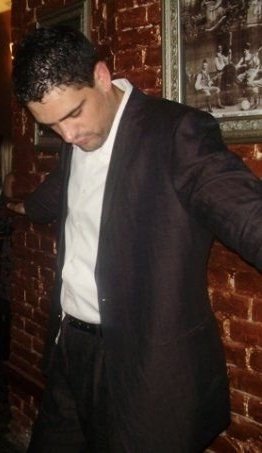 “I saw the marriage of the trapper in the open air in the far-west . . . . the bride was a red girl,
“I saw the marriage of the trapper in the open air in the far-west . . . . the bride was a red girl,
Her father and his friends sat nearby crosslegged and dumbly smoking . . . . they
had moccasins to their feet and large thick blankets hanging from their
shoulders;
On a bank lounged the trapper . . . . he was dressed mostly in skins . . . . his luxuriant
beard and curls protected his neck,
One hand rested on his rifle . . . . the other hand held firmly the wrist of the red girl,
She had long eyelashes . . . . her head was bare . . . . her coarse straight locks
descended upon her voluptuous limbs and reached to her feet.
The runaway slave came to my house and stopped outside,
I heard his motions crackling the twigs of the woodpile,
Through the swung half-door of the kitchen I saw him limpsey and weak,
And went where he sat on a log, and led him in and assured him,
And brought water and filled a tub for his sweated body and bruised feet,
And gave him a room that entered from my own, and gave him some coarse clean
clothes,
And remember perfectly well his revolving eyes and his awkwardness,
And remember putting plasters on the galls of his neck and ankles;
He staid with me a week before he was recuperated and passed north,
I had him sit next me at table . . . . my firelock leaned in the corner.”
Although there are many sections in the poem that are just breathtaking, I chose this passage from the 1855 version of “Leaves of Grass” as my favorite. Walt Whitman is, in my humble opinion, one of the few poets that succeeds in portraying the exact image to his readers. While reading this passage about the marriage of a trapper and a red girl and the story about the runaway slave, I was more than astonished by the scenes that seemed to happen right in front of me.
At the time when the poem was written there were many talks and debates concerning tolerance, slavery, equality etc. These two scenes show Whitman’s stance on the matter, and very well draw a pretty precise sketch of my opinion on these antebellum problems.
I was positively overwhelmed with the amount of work we did during our first class period on the 31st. The introductory class was great and the high point was definitely reading the poem out loud, and holding the old green “Leaves of Grass” copy. Can’t wait for Saturday!

Josip–
I’ve often wondered about the first passage you quote. David S. Reynolds mentions that it’s “the only extended wedding scene” in all of Whitman’s poetry, speculating that it’s based on a painting by Alfred Jacob Miller (Walt Whitman’s America, 290-91).
Whitman’s often criticized for his dodgy ideas about race, but at least he rejected the taboo against miscegenation with Native Americans.
Interesting too how much attention he gives to the trapper’s appearance. Nowadays (at least in the U.S.), it seems grooms are just accessories and weddings are really all about brides.
Located this information extremely helpful.thanks for sharing
I was quite happy to find this world wide web-web site.I wanted to many thanks for your time for this wonderful go through!! I certainly taking pleasure in each and every small bit of it and I have you bookmarked to check out new things you weblog publish.